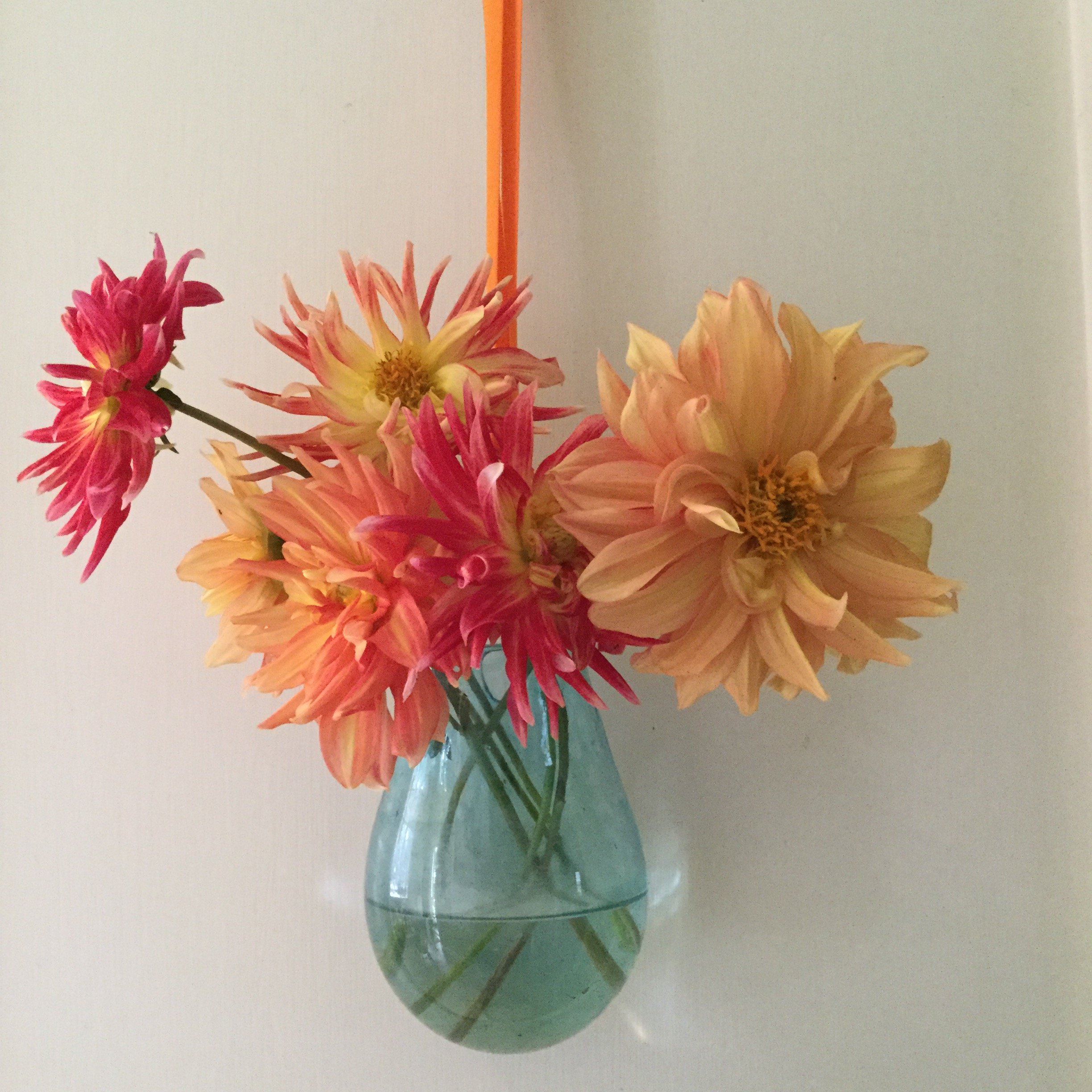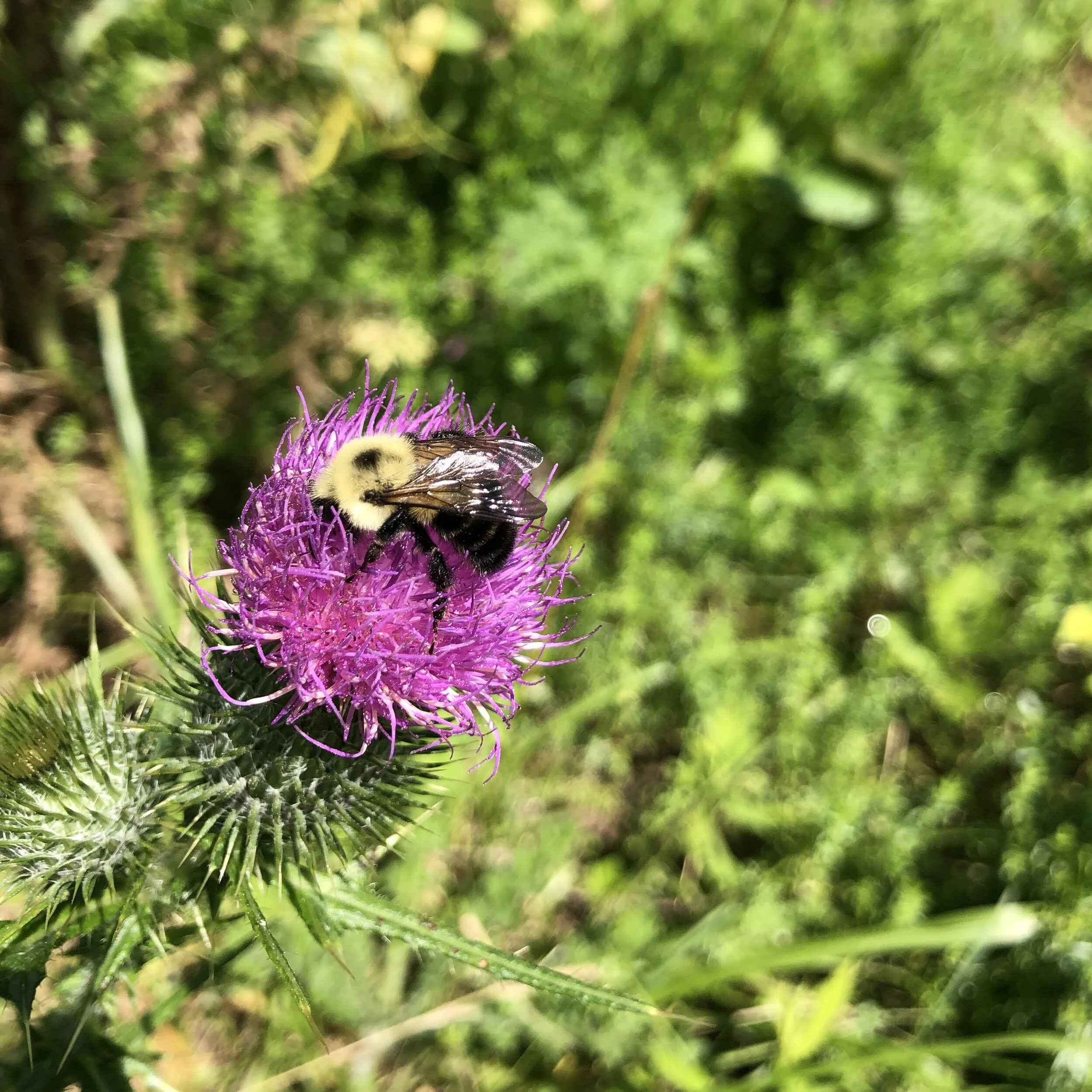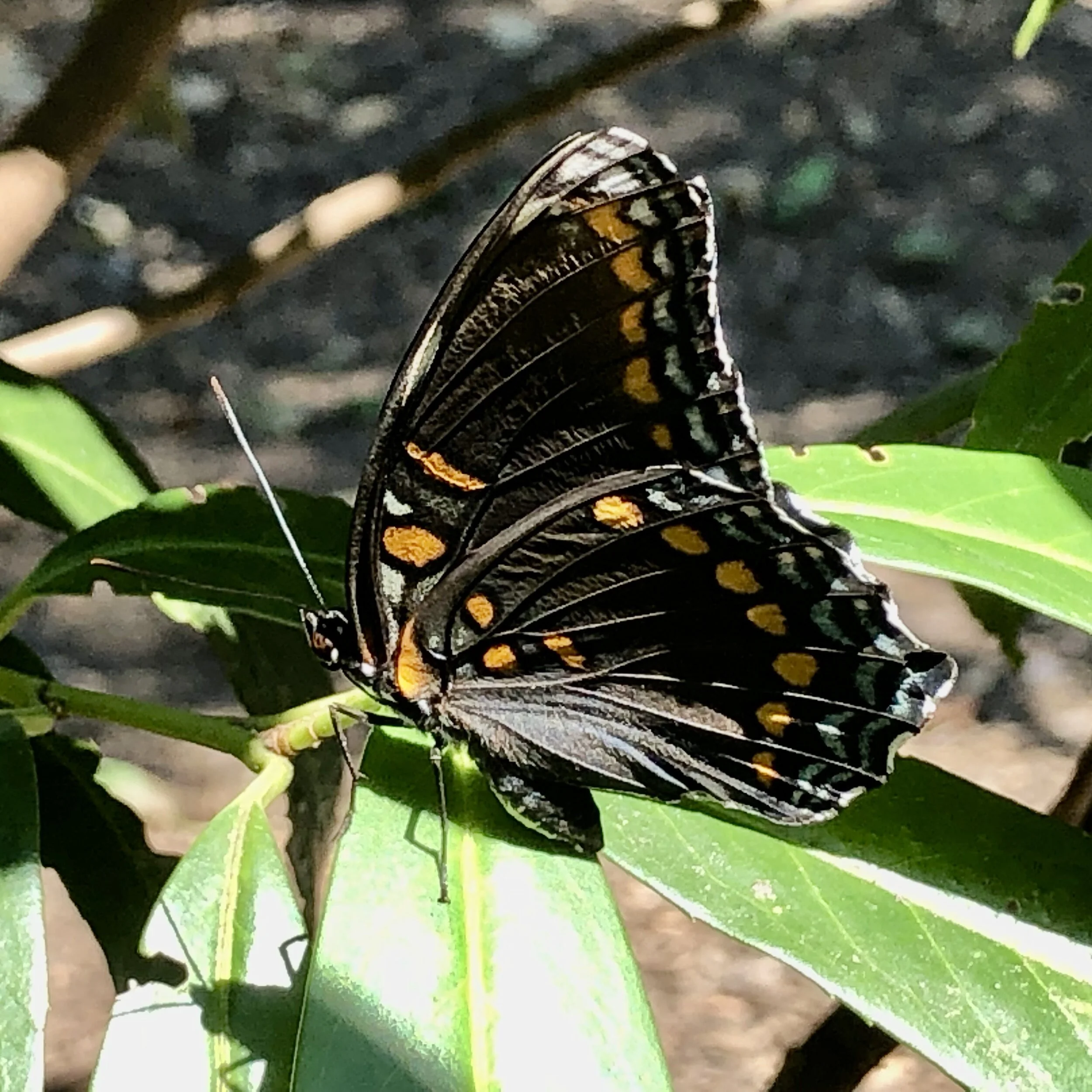Several years ago, heading to a favorite hike with family, we passed a pull off in the road we had walked past tons of times. There was some road construction that had just been completed and the Public Works Department landscaped a small disturbed area near the pull off. I’m not sure what the impetus was to landscape a tiny area off a country road in the middle of no where, but it can be a busy road during hiking season. The planting was a small Blue Spruce and two Japanese Barberries. Walking past I exclaimed my dismay to my hiking party, my then 15 year old daughter Ruby, my sister and three niece’s. I told them about the problems exotic invasive like barberry are causing our ecosystems. The girls were incredulous! They understood! Then they said we needed to pull the barberry out and save the woods. That night, after we purchased some Native Blacks-eyed Susan’s (Rudbeckia fulgida), we plotted our assault. At dusk, dressed all in black, we waked back up the road. We removed the Barberry and planted Rudbeckia in its place, never having to use plan B, which involved diving into the woods when our lookout spotted a car. Illegal… possibly. Immoral…hell no. Those plants are thriving today, and I think not only was it was a great lesson to share with our next generation of environmentalists but it sparked a passion for sustainable landscapes…
Sustainable Landscapes to Inspire - My home
In New Jersey, I have a typical 1920’s suburban lot. 50’x100’. It is small, manageable and alive. I say this with pride, because 18 years ago when we purchased the dilapidated home, there was one boxwood in back, and several Japanese Barberry in front, which, for reasons you will learn soon enough, I pulled out even before we moved in. And yes, I have a bit of the shoemakers daughter syndrome. My gardens are not always good models of great design. I bring too many plants home to try out. I sometimes don’t water enough, and I certainly don’t pull weeds enough. I have come to realize that’s OK too.
I have a home office, and whenever I need a break, a short time spent in my backyard always calms me. I love to see who is visiting my garden each day. I grow sunflowers outside my office window so I can watch woodpeckers on the nodding heads, pulling out seeds as they both sway.
Dried coneflower seed heads are Goldfinch magnets, and butterflies I don’t even know the names of visit my bee balm all summer.
Connecting with nature, even in small ways, benefits us. It calms and focus’ our minds and lowers stress levels. When my husband Max comes home from work in the summertime, before he even comes into the house, he sits for several minutes in front of his bee hive. Watching the bees coming home laden with pollen is calming. Sometimes they are so over loaded these girls almost seem drunk on pollen, crashing down towards the door like a tipsy pilot barely able to navigate from the weight of it.
Sustainable Landscapes that Inspire - My Story
I have been designing landscapes for 30 years. In the last few years I have noticed a dramatic increase in the willingness of my clients to install healthier, sustainable landscapes. The plants in our garden, or any garden or woods for that matter, perform what we call ecosystem services. They protect our watersheds, cool and clean our air, enrich and stabilize the soil we grow our food in, and sequester carbon. Whatever we do, in addition to doing less damage, lets reverse some of the damage that has already been done. It really is this simple: We are all connected. Everything we do has an effect on others. What we need to do is to remember this phrase every time we have a decision to make. I try to reflect on this each time I prepare a landscape plan. Let's plant more native plants. Let's do better storm water management – with rain gardens and green roofs, and let's tread more lightly on the earth. Let's plant more trees. It is easier than you think.
And once you have a more natural or ‘greener’ landscape you will be rewarded with more life in your back yard, more birds, butterflies and other pollinators, more wildlife in general.
I hope you have enjoyed this introduction to my sustainable landscapes blog, this is the very start of lots more to follow from me.
You can check out some great examples of my landscaping projects right here.
If you have any questions or comments to add, I would love to hear so please do so just below.
Carolle


























